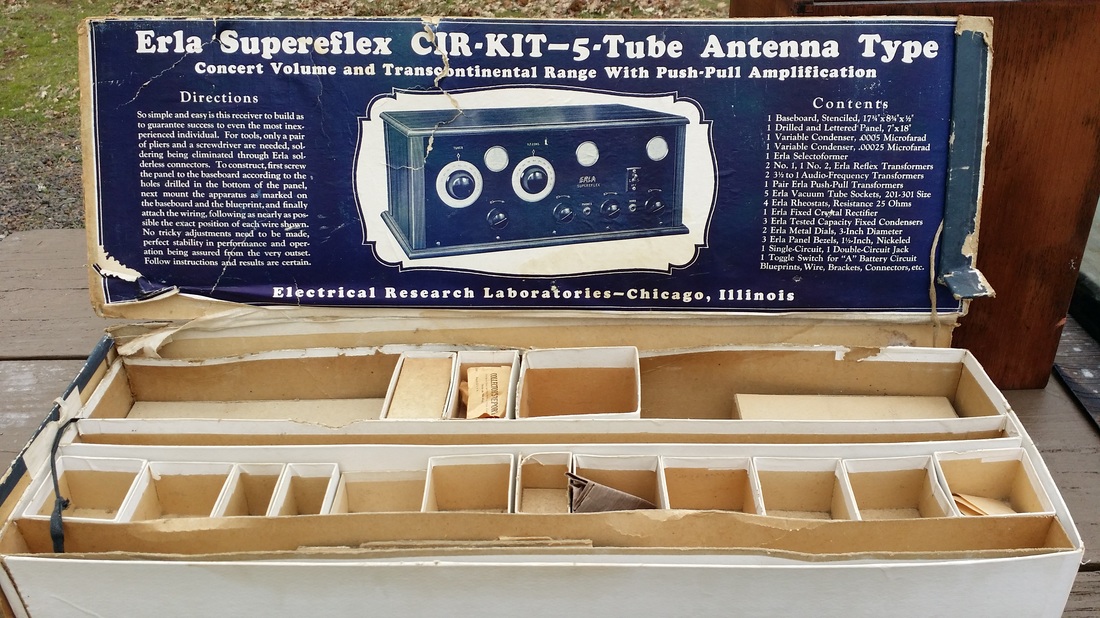Our subject is a "Superflex Cir-kit-5. There are several unique things about this radio. First, it worked when I got it after being stored for decades. Second, it was assembled in a reasonably competent manor. This is not, on average, true. Third, the shipping container was still with the radio.
Now, these kits had some unique parts, There was the sealed crystal, to be used as a detector. And there are the little 2 and 3 way splices which were just clamps held together with a screw. This eliminated the need to solder anything and was significant in the assembly both surviving and working in the first place. Bad solder joints are the rule rather than the exception in these early kit radios. Just to back up this assertion, of the last 4 kit radios I have acquired, 2 probably never worked, 1 might have worked poorly, but this one still worked well.
Yes, it worked well, for a reflex circuit that used a crystal detector. It worked well if you sat close enough to the radio to fiddle with one or two controls every couple of minutes. Otherwise your signal would slowly degrade to garbled words or a squeal. The radio is very sensitive to slight changes in cathode temperature and/or changes in B+ voltage, less so on strong local stations. DXing required a dedicated operator. Otherwise it was loud and sensitive with push-pull output.






 RSS Feed
RSS Feed